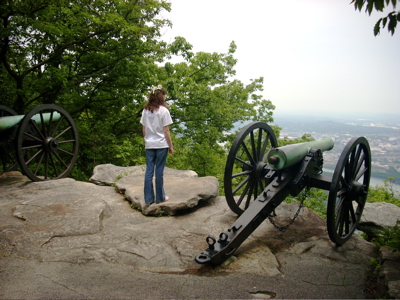
Outpost
Atlanta
Gone With The Wind
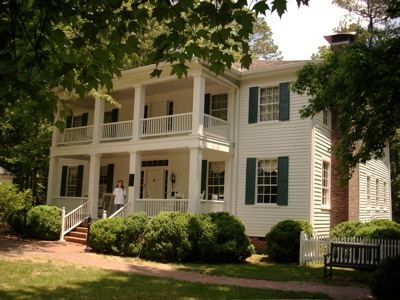
| Route 66 | Cities | Beaches |
 |
Outpost Atlanta Gone With The Wind |
 |
| Atlanta |
Gone With The Wind at 1150 pages is the longest book most students read in high school, or in their lives for that matter. Despite this, it is probably the most beloved. Many students read it the first time on their own in eighth grade, and reread it on their own several more times, in addition to the class time they spend on it, usually in 11th grade. For all its melodrama and the great love affair between Rhett and Scarlett, GWTW is one of the greatest historical novels ever written, and much of the history is still there, right where Margaret Mitchell described it. We love our annual trip to Atlanta to poke around this history. Actually, "Atlanta" really means the Atlanta Corridor, which begins in Chattanooga and extends below Atlanta to Jonesboro. The Chattanooga stop includes the Chattanooga ChooChoo (below left), the Battle Above the Clouds and four other battlegrounds. As Sherman fought his way South, he left additional sites at Dalton, New Hope Church, Allatoona and Kennesaw Mountain (above, left). The Battle of Atlanta left sites all over town, and finally the war spilled south to Jonesboro and the great plantations, including the one known as Tara (above, right). Atlanta had to totally rebuild, and today the sprawling city bears little resemblance to Five Points of 1864, but a surprising number of the actual buildings remain, and many of the earthworks from the battles are still in place. The Margaret Mitchell home, where she wrote the novel, is also still there and open for tours. |
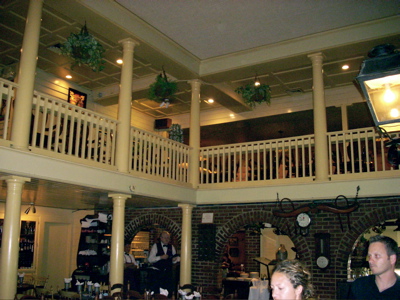
|
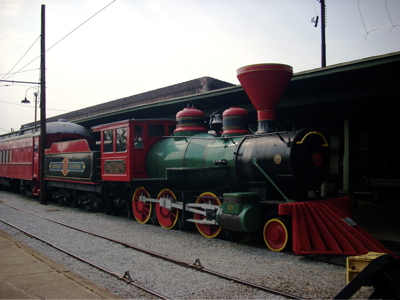 |
The reason Sherman was determined to destroy Atlanta was because it was the railroad center of the Confederacy. The town was then called Five Points because of the five rail lines which came in, one down from Virginia, one down from Kentucky, one up from New Orleans, one up from Savannah and one up from Charleston. Today, to study the Battle of Atlanta and the others leading up to it is to study the railroads in great detail. And they're still there, including the famous General and the Chattanooga Choo Choo. Your drive down from Chatanooga is basically one battlefield after another along the rail line. Atlanta is still a railroad center today, and a line still operates right through downtown Jonesboro, just as in 1864. You have to brace yourself for some odd juxtapositions. The plantation called Tara is still there, but the town has grown out to meet it, and a busy highway now runs along one side. Peachtree Street is now a busy downtown thoroughfare. The hilltop where General Hood surveyed the battle is now the Carter Center, with presidential papers and conference headquarters. Hood's vantage point is preserved as a landscaped garden, but it still overlooks the city. Aunt Pittypat's is still there, but to preserve it, they had to build another building around it. Margaret Mitchell's home is carefully protected, but the meadow where she rode her horse is now ten lane I-64. Twelve Oaks was rebuilt but is now a bed and breakfast. |
|
You also have to understand that the novel and the movie are separate creations. Margaret Mitchell was a very well educated newspaper reporter, and based her novel on solid facts, real people (many of whom were her relatives or their neighbors), and buildings she personally knew. If you carry the novel with you and refer to its various passages, you will be amazed at how well the remaining landmarks match her descriptions. However, the film altered her vision. If you are looking for buildings which match what you saw in the film, you will be disappointed. Tara itself is the best example of this. The real plantation was, and still is, called Stately Oaks. It was the ROAD which was named Tara, and still is. Margaret Mitchell named her fictional plantation after the road, but used the real buildings for her descriptions. It is a powerful experience to sit on one of the benches in the front yard of the plantation, look at the house, and read her description. It matches perfectly. THAT was the veranda where Scarlett charmed the Tarleton twins. If you walk inside, so do her descriptions of the foyer and various rooms. THAT was the staircase where Margaret Mitchell's great aunt shot the union soldier. But Hollywood insisted on creating its own mansion, much against Mitchell's protests. Even Mitchell's own home, shown here at right, has had to be defended by her loyal fans against encroachment and demolition. They finally set up their own foundation. Atlanta loves its Civil War and Gone With The Wind history, but not when it inteferes with profit. |
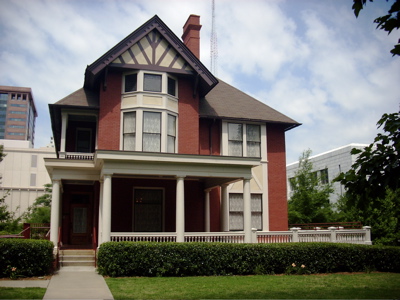 |
|
|||
|